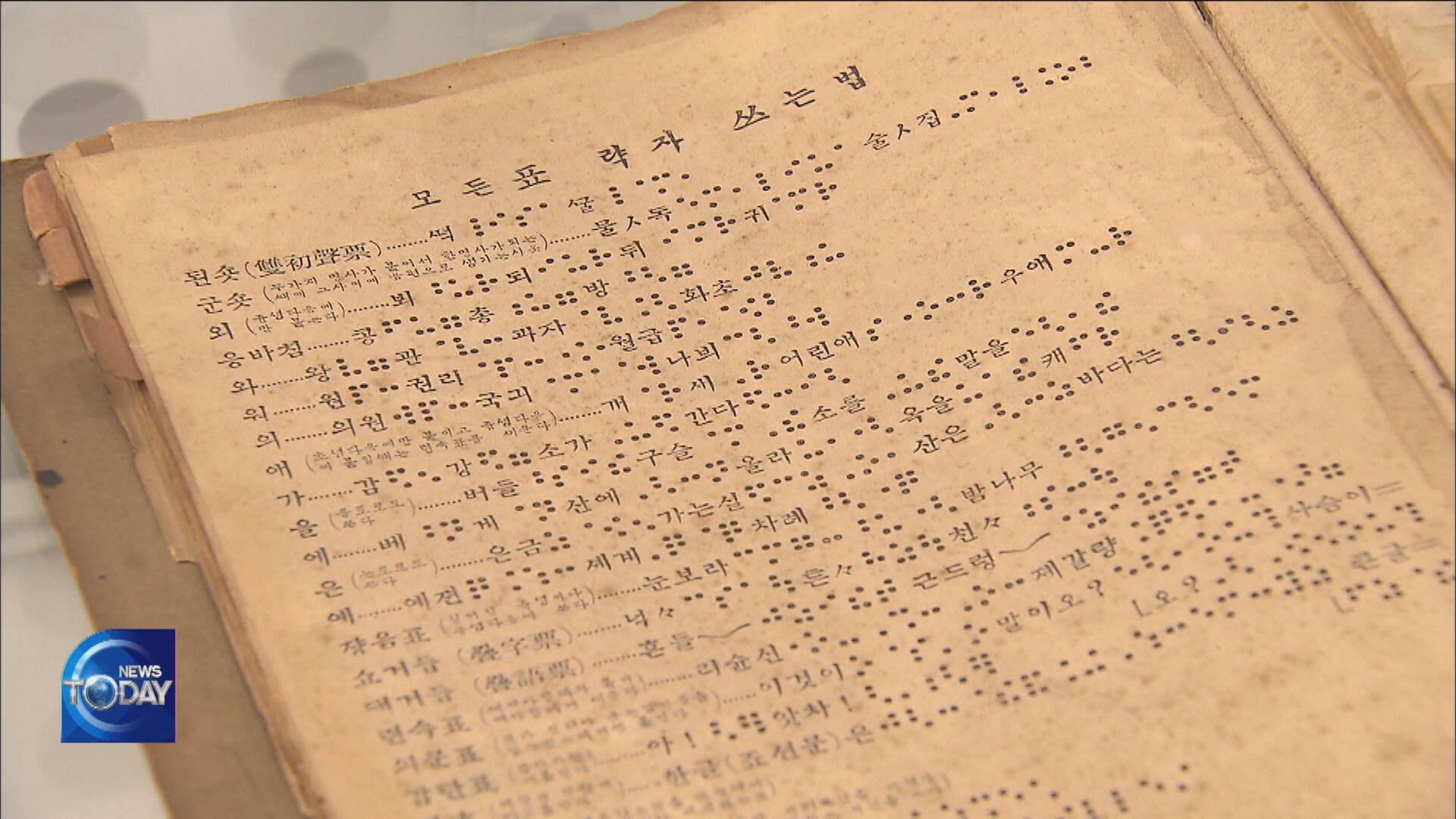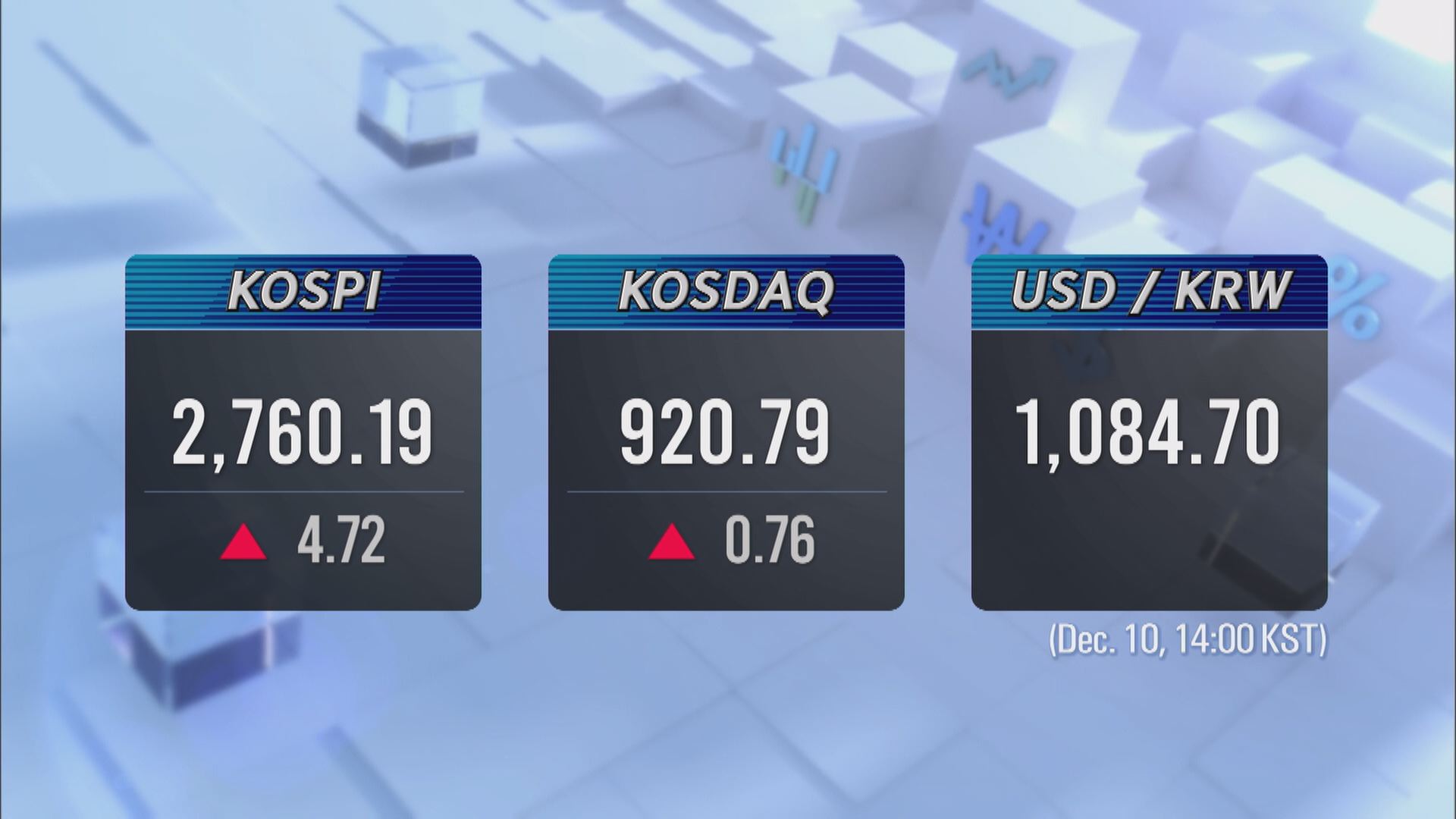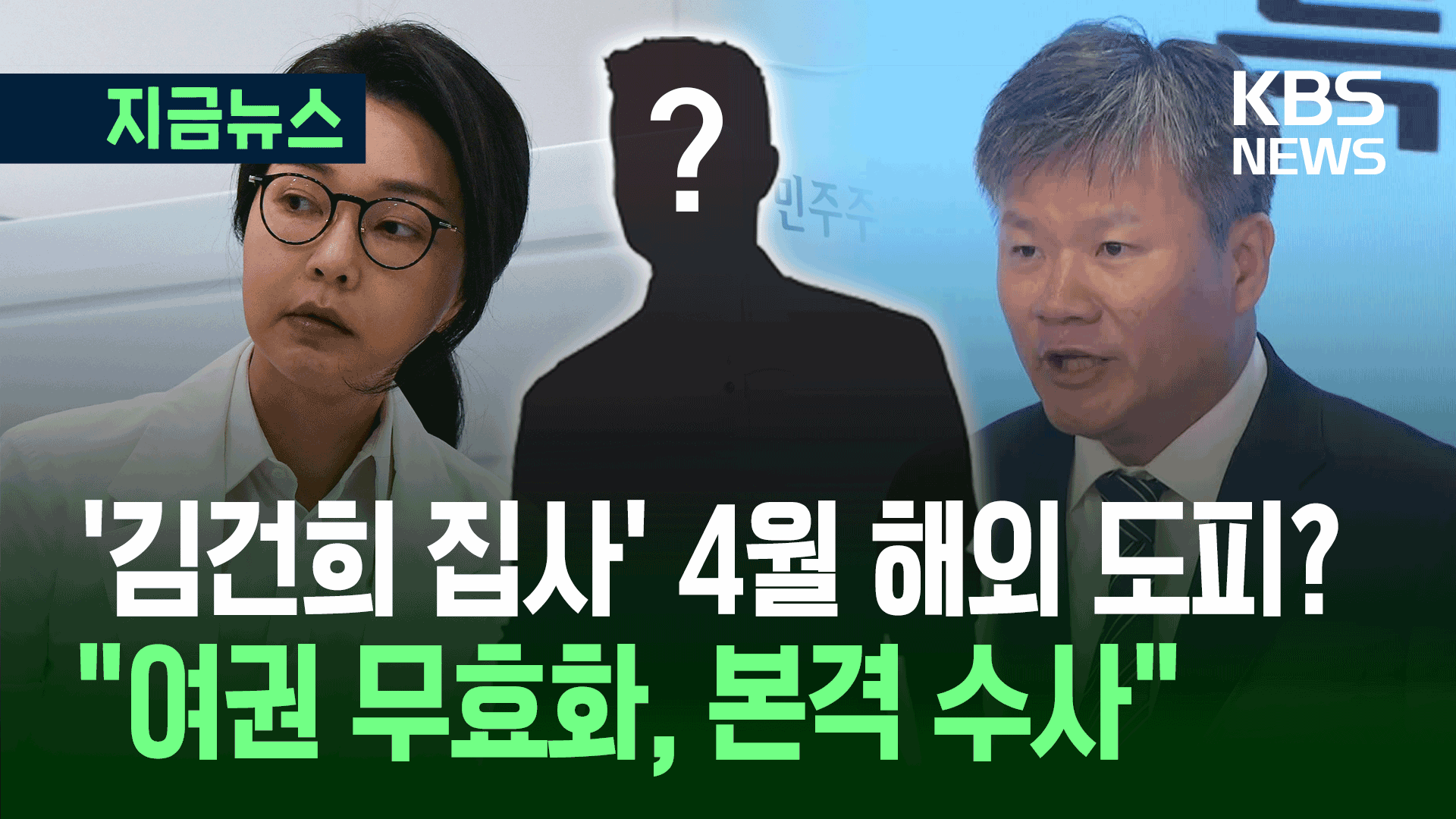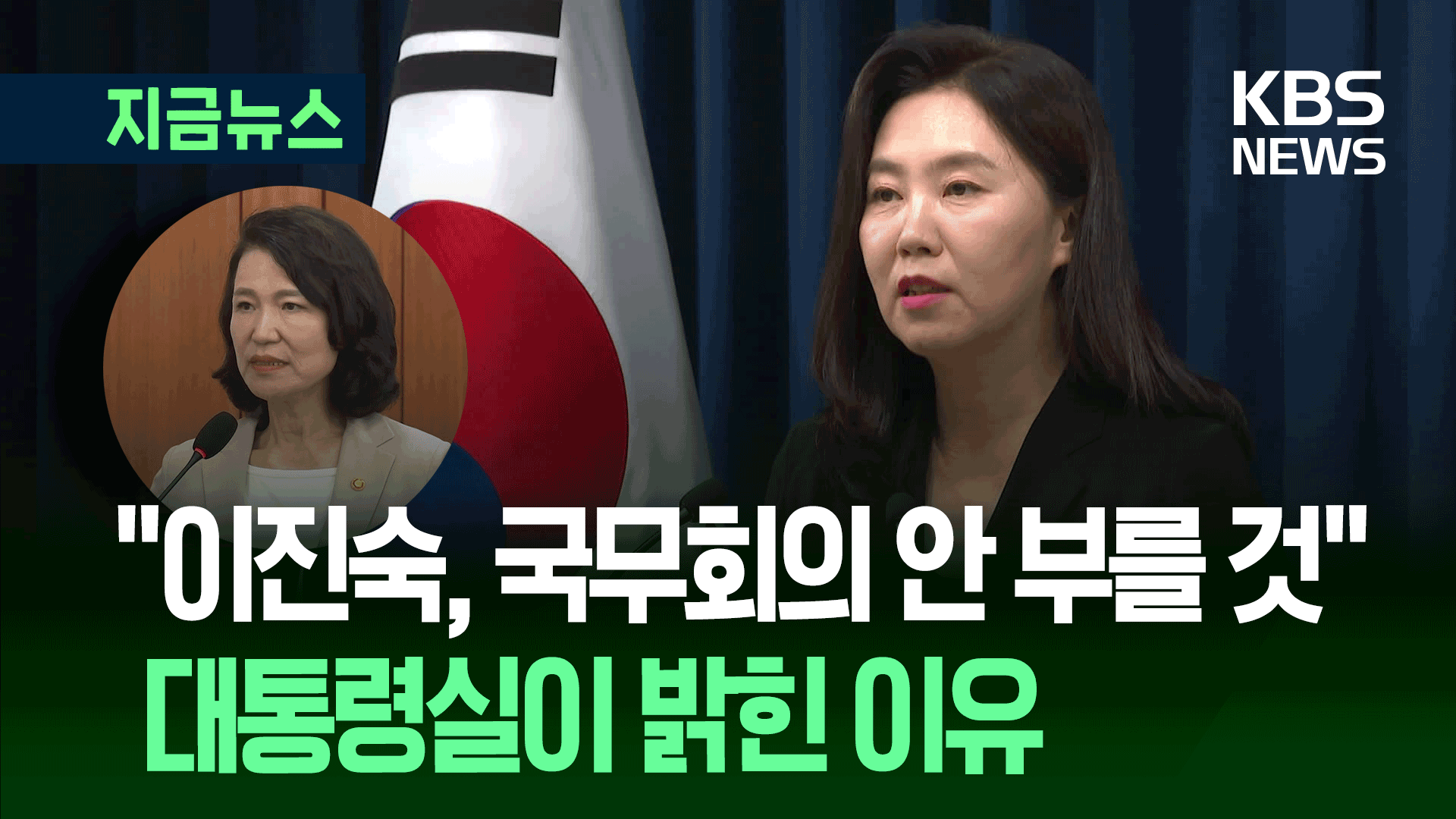BRAILLE SYSTEM BECOMES STATE CULTURAL ASSET
입력 2020.12.10 (15:02)
수정 2020.12.10 (16:45)
읽어주기 기능은 크롬기반의
브라우저에서만 사용하실 수 있습니다.
[Anchor Lead]
South Korea's first Braille system for the Korean language has been designated as a state cultural asset. Invented during the Japanese colonial rule of the nation, the Korean Braille system, called Hunmaeng Jeongeum, is highly regarded for its cultural and historical values. It is the first cultural property to receive the state registration among those for the blind. Here is more.
[Pkg]
An Aesop’s fable written in Braille on a thin zinc plate. This is the first Korean Braille system Hunmaeng Jeongeum, invented by Park Doo-sung in 1926. Five Braille letters—two vertical and three horizontal dots—are assembled in various ways to express all Korean consonants and vowels. During the Japanese colonial rule of Korea, this new invention opened up the world to Koreans with visual impairments.
[Soundbite] LEE YONG-HAENG(SONGAM PARK DOO-SUNG MUSEUM) : "During Japan's colonial rule, the Braille system in Japanese was being used. But Korean Braille books were published and became available after Park invented the Korean version."
Eight relics related to Hunmaeng Jeongeum have been designated as state cultural assets. It's the first time that cultural properties for the visually challenged earned the state recognition. The Cultural Heritage Administration assessed Hunmaeng Jeongeum holds great historical value as a native language system for the blind, which also offers glimpses into the Korean society a century ago.
[Soundbite] LEE KYU-IL(CHAIRMAN, INCHEON BLIND WELFARE ASSOCIATION) : "The relics hold high cultural values, as they clearly show how the Braille system was invented and Braille books were produced."
Also known by his pen name “Songam,” Park Doo-sung was born in Ganghwa near Incheon and worked as a teacher at Jaesaengwon, the predecessor of Seoul National School for the Blind. To avoid strict surveillance by Japanese officials seeking to abolish the Korean language, he secretly worked to invent the Korean Braille system, which was named after Hunmin Jeongeum, the original name of the Korean alphabet Hangeul created by King Sejong the Great. This is why he is called King Sejong of the visually impaired. Park also worked to promote the use of Hunmaeng Jeongeum by translating and publishing some 200 books in Korean Braille, including the Bible.
South Korea's first Braille system for the Korean language has been designated as a state cultural asset. Invented during the Japanese colonial rule of the nation, the Korean Braille system, called Hunmaeng Jeongeum, is highly regarded for its cultural and historical values. It is the first cultural property to receive the state registration among those for the blind. Here is more.
[Pkg]
An Aesop’s fable written in Braille on a thin zinc plate. This is the first Korean Braille system Hunmaeng Jeongeum, invented by Park Doo-sung in 1926. Five Braille letters—two vertical and three horizontal dots—are assembled in various ways to express all Korean consonants and vowels. During the Japanese colonial rule of Korea, this new invention opened up the world to Koreans with visual impairments.
[Soundbite] LEE YONG-HAENG(SONGAM PARK DOO-SUNG MUSEUM) : "During Japan's colonial rule, the Braille system in Japanese was being used. But Korean Braille books were published and became available after Park invented the Korean version."
Eight relics related to Hunmaeng Jeongeum have been designated as state cultural assets. It's the first time that cultural properties for the visually challenged earned the state recognition. The Cultural Heritage Administration assessed Hunmaeng Jeongeum holds great historical value as a native language system for the blind, which also offers glimpses into the Korean society a century ago.
[Soundbite] LEE KYU-IL(CHAIRMAN, INCHEON BLIND WELFARE ASSOCIATION) : "The relics hold high cultural values, as they clearly show how the Braille system was invented and Braille books were produced."
Also known by his pen name “Songam,” Park Doo-sung was born in Ganghwa near Incheon and worked as a teacher at Jaesaengwon, the predecessor of Seoul National School for the Blind. To avoid strict surveillance by Japanese officials seeking to abolish the Korean language, he secretly worked to invent the Korean Braille system, which was named after Hunmin Jeongeum, the original name of the Korean alphabet Hangeul created by King Sejong the Great. This is why he is called King Sejong of the visually impaired. Park also worked to promote the use of Hunmaeng Jeongeum by translating and publishing some 200 books in Korean Braille, including the Bible.
■ 제보하기
▷ 카카오톡 : 'KBS제보' 검색, 채널 추가
▷ 전화 : 02-781-1234, 4444
▷ 이메일 : kbs1234@kbs.co.kr
▷ 유튜브, 네이버, 카카오에서도 KBS뉴스를 구독해주세요!
- BRAILLE SYSTEM BECOMES STATE CULTURAL ASSET
-
- 입력 2020-12-10 15:02:10
- 수정2020-12-10 16:45:09

[Anchor Lead]
South Korea's first Braille system for the Korean language has been designated as a state cultural asset. Invented during the Japanese colonial rule of the nation, the Korean Braille system, called Hunmaeng Jeongeum, is highly regarded for its cultural and historical values. It is the first cultural property to receive the state registration among those for the blind. Here is more.
[Pkg]
An Aesop’s fable written in Braille on a thin zinc plate. This is the first Korean Braille system Hunmaeng Jeongeum, invented by Park Doo-sung in 1926. Five Braille letters—two vertical and three horizontal dots—are assembled in various ways to express all Korean consonants and vowels. During the Japanese colonial rule of Korea, this new invention opened up the world to Koreans with visual impairments.
[Soundbite] LEE YONG-HAENG(SONGAM PARK DOO-SUNG MUSEUM) : "During Japan's colonial rule, the Braille system in Japanese was being used. But Korean Braille books were published and became available after Park invented the Korean version."
Eight relics related to Hunmaeng Jeongeum have been designated as state cultural assets. It's the first time that cultural properties for the visually challenged earned the state recognition. The Cultural Heritage Administration assessed Hunmaeng Jeongeum holds great historical value as a native language system for the blind, which also offers glimpses into the Korean society a century ago.
[Soundbite] LEE KYU-IL(CHAIRMAN, INCHEON BLIND WELFARE ASSOCIATION) : "The relics hold high cultural values, as they clearly show how the Braille system was invented and Braille books were produced."
Also known by his pen name “Songam,” Park Doo-sung was born in Ganghwa near Incheon and worked as a teacher at Jaesaengwon, the predecessor of Seoul National School for the Blind. To avoid strict surveillance by Japanese officials seeking to abolish the Korean language, he secretly worked to invent the Korean Braille system, which was named after Hunmin Jeongeum, the original name of the Korean alphabet Hangeul created by King Sejong the Great. This is why he is called King Sejong of the visually impaired. Park also worked to promote the use of Hunmaeng Jeongeum by translating and publishing some 200 books in Korean Braille, including the Bible.
South Korea's first Braille system for the Korean language has been designated as a state cultural asset. Invented during the Japanese colonial rule of the nation, the Korean Braille system, called Hunmaeng Jeongeum, is highly regarded for its cultural and historical values. It is the first cultural property to receive the state registration among those for the blind. Here is more.
[Pkg]
An Aesop’s fable written in Braille on a thin zinc plate. This is the first Korean Braille system Hunmaeng Jeongeum, invented by Park Doo-sung in 1926. Five Braille letters—two vertical and three horizontal dots—are assembled in various ways to express all Korean consonants and vowels. During the Japanese colonial rule of Korea, this new invention opened up the world to Koreans with visual impairments.
[Soundbite] LEE YONG-HAENG(SONGAM PARK DOO-SUNG MUSEUM) : "During Japan's colonial rule, the Braille system in Japanese was being used. But Korean Braille books were published and became available after Park invented the Korean version."
Eight relics related to Hunmaeng Jeongeum have been designated as state cultural assets. It's the first time that cultural properties for the visually challenged earned the state recognition. The Cultural Heritage Administration assessed Hunmaeng Jeongeum holds great historical value as a native language system for the blind, which also offers glimpses into the Korean society a century ago.
[Soundbite] LEE KYU-IL(CHAIRMAN, INCHEON BLIND WELFARE ASSOCIATION) : "The relics hold high cultural values, as they clearly show how the Braille system was invented and Braille books were produced."
Also known by his pen name “Songam,” Park Doo-sung was born in Ganghwa near Incheon and worked as a teacher at Jaesaengwon, the predecessor of Seoul National School for the Blind. To avoid strict surveillance by Japanese officials seeking to abolish the Korean language, he secretly worked to invent the Korean Braille system, which was named after Hunmin Jeongeum, the original name of the Korean alphabet Hangeul created by King Sejong the Great. This is why he is called King Sejong of the visually impaired. Park also worked to promote the use of Hunmaeng Jeongeum by translating and publishing some 200 books in Korean Braille, including the Bible.
이 기사가 좋으셨다면
-
좋아요
0
-
응원해요
0
-
후속 원해요
0

















이 기사에 대한 의견을 남겨주세요.